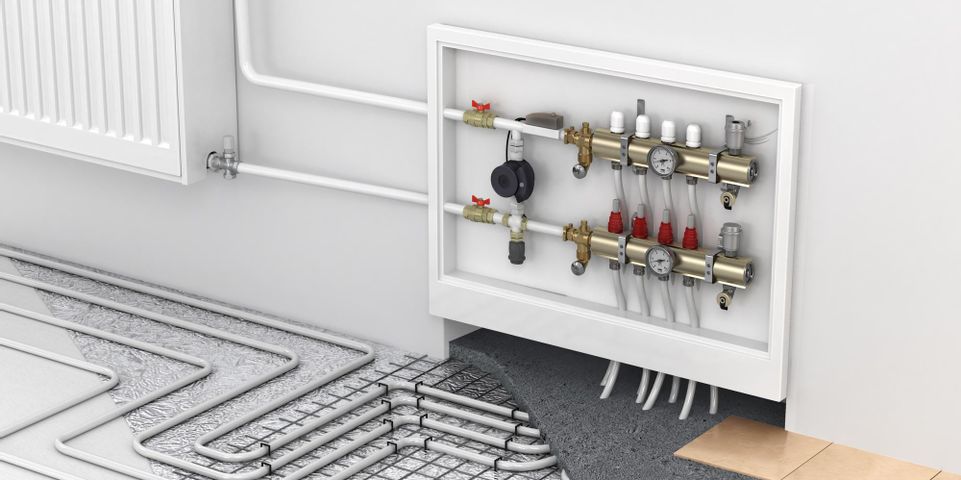
Radiant heating is the effect of the warmth coming off an object. Radiant flooring uses this concept to heat your floors, and you can use this technology to keep the temperature of your home comfortable. Despite the large upfront cost, there are multiple benefits to owning an underfloor heating system.
How Does Radiant Flooring Work?
This technology can be used in an electric, hydronic, or air-heated capacity. The system is installed underneath the floor, and the heat rises into the room. Radiant flooring is easier to install if it’s done before the house is completed. If you live in a finished home, you’ll need to rip out the flooring to install it.
-
Electric: Electric radiant floors use conductive plastic mounted on the subfloor and are heated with electric cables. Electric is only cost-effective for large concrete spaces, like a warehouse, and only if the heating is shut off during off-peak hours. If you want to expand existing electric radiant floors, you should use a mini-split heat pump, as it operates more effectively.
-
Hydronic: Hydronic radiant floors use water through a system of pipes or tubing mounted on the subfloor. It’s the most cost-effective option, but the price varies depending on the size of the home and the area it covers.
-
Air-heated: Air-heated radiant flooring is uncommon because air can’t hold as much heat as the other two methods and is expensive. When combined with a solar air heating system, it can only produce heat in the day.
Benefits of Underfloor Heating
Warmer Than a Conventional Furnace
 Radiant flooring heats your home more effectively than a typical furnace. Conventional air-heating systems push air out and up into the ceiling, so your floor is colder than your thermostat tells you it is. Keeping your feet warm is important to maintaining bodily comfort.
Radiant flooring heats your home more effectively than a typical furnace. Conventional air-heating systems push air out and up into the ceiling, so your floor is colder than your thermostat tells you it is. Keeping your feet warm is important to maintaining bodily comfort.
Useful on Most Floor Materials
Heated floors have no restrictions on any flooring, although some materials are better than others. For example, stone, ceramic tile, and concrete can hold and transfer heat more effectively. Vinyl, plastic, and carpets don’t transfer heat as well, but they can still be used for radiant flooring.
No Noise
Conventional furnaces can be heard when they turn on and off. Radiant flooring heats up slowly instead of “kicking-on.” This heating system makes no noise at all.
If you want to install radiant flooring in your existing home or new build, or if you have a traditional furnace that needs maintenance or repairs, contact Hands On Heating Inc. in Stratford, CT. Since 2006, they’ve performed services for residential, industrial, and commercial properties. Their highly qualified staff prioritizes customer service, affordable rates, and product knowledge. Call (203) 612-1904 for an appointment or 24-hour emergency service, or visit their website for more information.
About the Business
Have a question? Ask the experts!
Send your question

